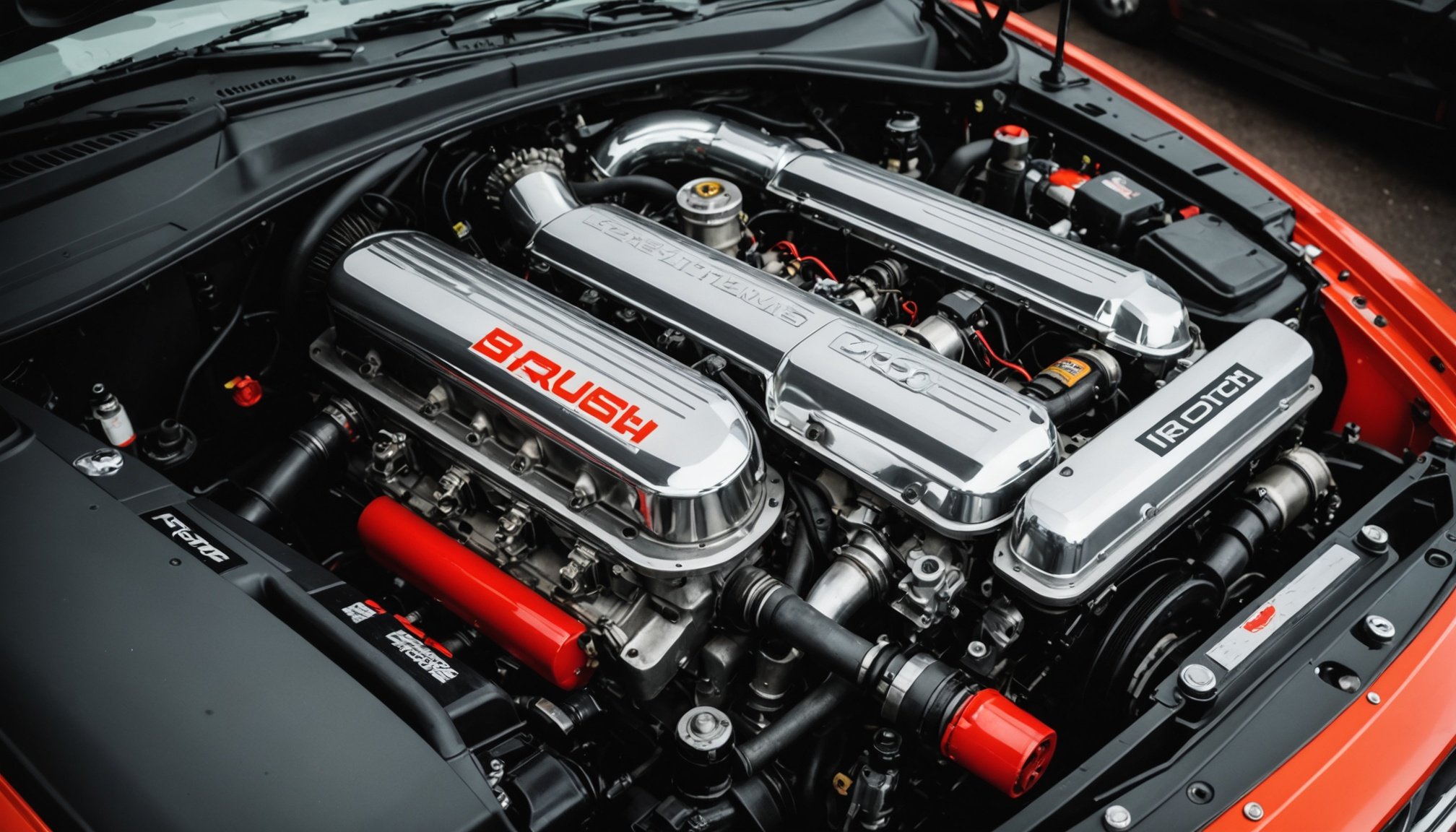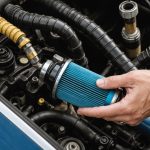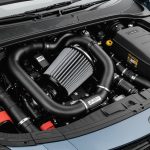Understanding Throttle Response in Naturally Aspirated Engines
Throttle response is a critical aspect of engine performance, particularly in naturally aspirated engines. It refers to how quickly an engine reacts to driver input, specifically the time taken for the engine to increase power following the throttle being opened. A responsive throttle can significantly enhance the driving experience, offering a more dynamic and engaging vehicle control.
Several factors influence throttle response in naturally aspirated engines. Airflow and fuel mixture are key, as they determine how efficiently the engine can react to increased throttle input. The engine’s tuning, including the calibration of the air-fuel ratio and ignition timing, plays a crucial role in maintaining a brisk throttle response. A well-tuned engine offers superior responsiveness and optimised performance.
Have you seen this : Navigating Car Accident Claims: Expert Strategies for Multi-Party Incidents in the UK
Misconceptions about throttle response often lead to unnecessary modifications. Many believe simply adding a larger throttle body or free-flowing exhaust will immediately improve throttle response. However, without appropriate tuning, these changes can sometimes degrade engine performance. It is important to focus on balanced and precise tuning for the best outcomes in naturally aspirated engines, ensuring every component works harmoniously to deliver optimal throttle response. Knowledge in this area can guide enthusiasts to enhance their vehicle’s performance accurately.
Practical Strategies for Enhancing Throttle Response
Improving throttle response is crucial for achieving optimal vehicle performance. By understanding the mechanics involved and considering specific modifications, drivers can significantly enhance their driving experience.
Also to read : Essential Guide to Legally Installing a Retro Fit Backup Camera in Classic UK Cars
Engine Tuning Basics
Engine tuning plays a pivotal role in throttle enhancement, focusing on adjusting parameters to fine-tune performance. ECU remapping, for instance, recalibrates the engine’s software to improve efficiency and throttle response. Tuning chips serve a similar purpose by providing custom performance maps. Selecting the right tuning service or opting for a DIY approach depends on one’s expertise and confidence. Professional services ensure precision while offering warranties, whereas DIY enthusiasts gain hands-on experience.
Recommended Modifications for Natural Aspiration
When it comes to naturally aspirated engines, upgrading the intake manifold enhances airflow, thereby improving throttle reaction. Optimizing the exhaust system by reducing restrictions can also yield significant improvements. Additionally, integrating a lightweight flywheel reduces rotational mass, allowing the engine to rev more freely and respond quicker.
Maintenance Tips for Optimal Performance
Routine maintenance is fundamental in sustaining enhanced throttle response. Regular service routines, including checks of throttle bodies and cables, are essential. Using high-quality fuel and oil contributes to overall engine health and efficiency, ensuring it performs at its peak while maintaining reliability.
Product Recommendations for Enthusiasts
Selecting the right performance parts is crucial for enthusiasts eager to elevate their driving experience. Tuning products can significantly improve throttle response and overall vehicle performance. Several brands stand out for their exceptional offerings. Racechip and APR are highly regarded for their advanced throttle response systems, earning positive reviews in the UK. These brands cater to various budgets, allowing enthusiasts to choose the right level of enhancement.
When considering performance upgrades, it’s essential to weigh the costs against the benefits. A throttle body upgrade or chip tuning could serve as an effective starting point for those new to car modifications. The initial investment varies, with basic enhancements starting at a few hundred pounds, while comprehensive packages may exceed a thousand pounds.
On the UK market, products such as Eibach’s Pro-Kit springs and K&N air filters are celebrated for delivering tangible performance improvements and enduring quality. Enthusiasts have praised these products for their compatibility with various vehicle models and the noticeable performance boost they provide. Opting for these proven tuning products can offer a balanced approach between performance gains and cost-efficiency.
Real-world Examples and Case Studies
Exploring real-world examples and case studies can provide invaluable insights into vehicle performance improvements. These experiences highlight practical applications, inspiring others to take advantage of these modifications.
UK Car Enthusiasts’ Success Stories
Car enthusiasts in the UK have shared compelling real-life testimonials about optimising throttle response. For instance, an interview with a classic car owner revealed how their upgraded vehicle transitioned from sluggish acceleration to sharp and responsive handling. Such a transformation is a testament to the effectiveness of these modifications. Before-and-after analyses often show significant improvements in acceleration time and efficiency. Through these stories, enthusiasts glean lessons on selecting the right upgrades and avoiding common pitfalls in tuning ventures.
Performance Shop Highlights
Several top performance tuning shops in the UK offer services tailored to enhancing car performance. These shops provide an array of products, from high-performance air intakes to specialised exhaust systems. They emphasise the benefits of professional tuning, such as superior precision and reliability, compared to DIY modifications. Customers often testify to increased horsepower and smoother handling post-tuning. For those seeking dependable results, professional tuning is recommended to ensure optimal vehicle performance and satisfaction.
Visual Aids and Resources
Understanding throttle response can be challenging, but utilising visual guides can simplify complex concepts. Infographics are particularly helpful as they visually break down how throttle response works, showing relationships between various engine components and their function. These visual guides can aid in grasping intricate details swiftly.
Apart from infographics, instructional videos offer dynamic, step-by-step tutorials on modifying and maintaining throttle systems. These videos provide visual demonstrations, making it easier to follow along with technical procedures. They cater to different learning styles, aiding both visual and auditory learners.
Connecting with a knowledgeable community can be highly beneficial. Exploring reputable online forums and educational resources provides access to shared knowledge and experiences. They are invaluable for troubleshooting issues, discovering new throttle response techniques, and engaging with other enthusiasts or experts. They are platforms where one can ask questions and receive prompt, precise answers based on practical experiences.
These resources are essential tools to enhance understanding and ensure proper throttle maintenance, ultimately contributing to optimal vehicle performance. This approach encourages proactive learning and informed decision-making, helping users to navigate throttle response modifications and enhancements effectively.
Frequently Asked Questions
Navigating the world of engine tuning can be daunting, especially when it comes to naturally aspirated engines. Let’s address some of the common concerns and incorrect assumptions that frequently arise.
Does tuning a naturally aspirated engine improve performance directly? This common inquiry often arises in throttle response FAQs. Tuning can enhance performance, but it largely depends on the specific modifications and tuning techniques employed. Adjustments like optimising the air-fuel mixture and ignition timing can increase efficiency and output.
Understanding the myths surrounding performance modifications is crucial. A prevalent misconception is that all tuning modifications can lead to instant power increases. However, noticeable gains often require a combination of changes, including exhaust upgrades and better fuel management.
Troubleshooting throttle response issues can be another concern among enthusiasts. Common causes include dirty throttle bodies, faulty sensors, or incorrect ECU settings. Regular maintenance and diagnostics can help keep your engine’s throttle response sharp.
In summary, while tuning can lead to improved performance, it’s vital to have realistic expectations and rely on accurate information. Addressing these FAQs thoroughly helps foster informed decisions and better outcomes.











